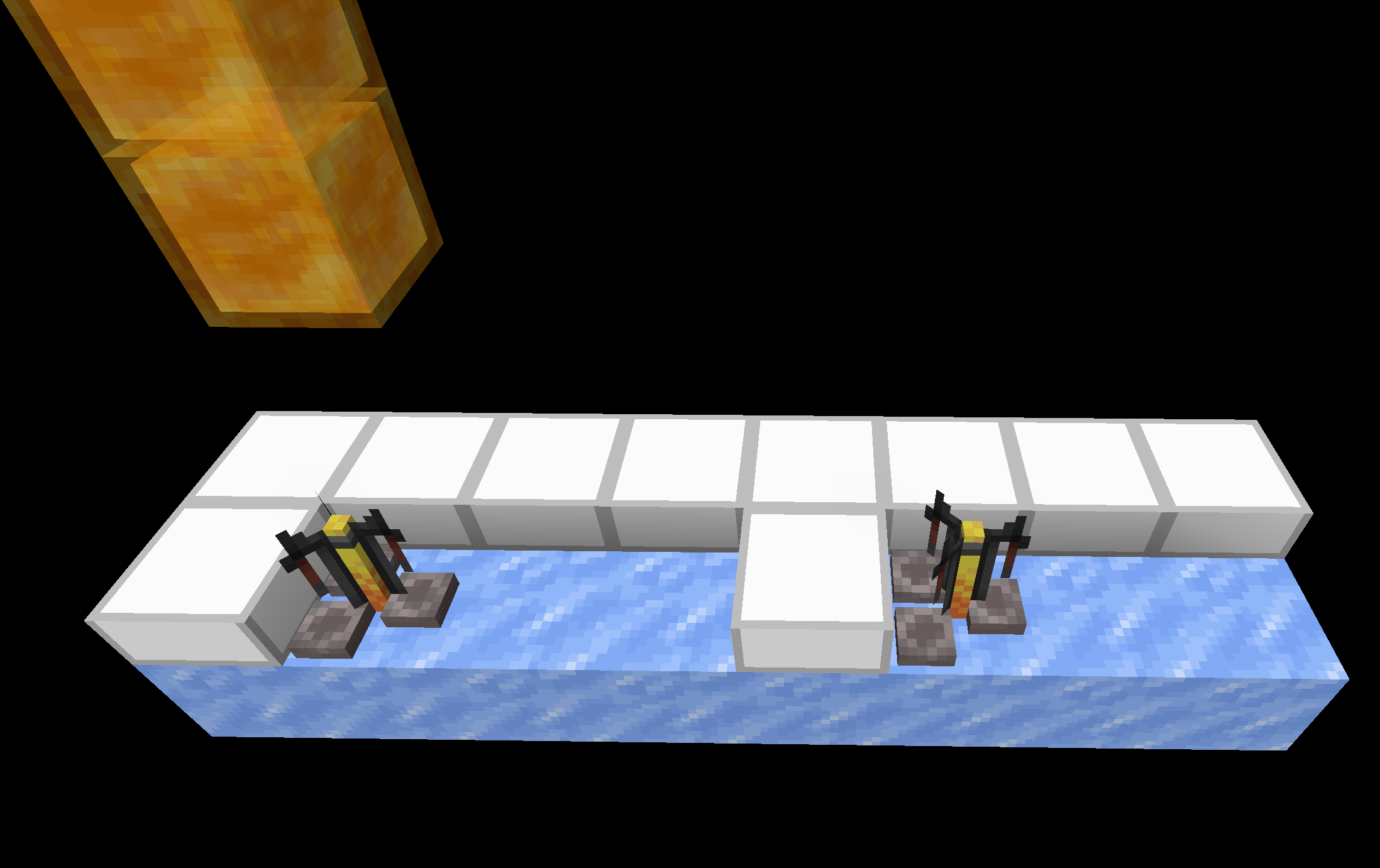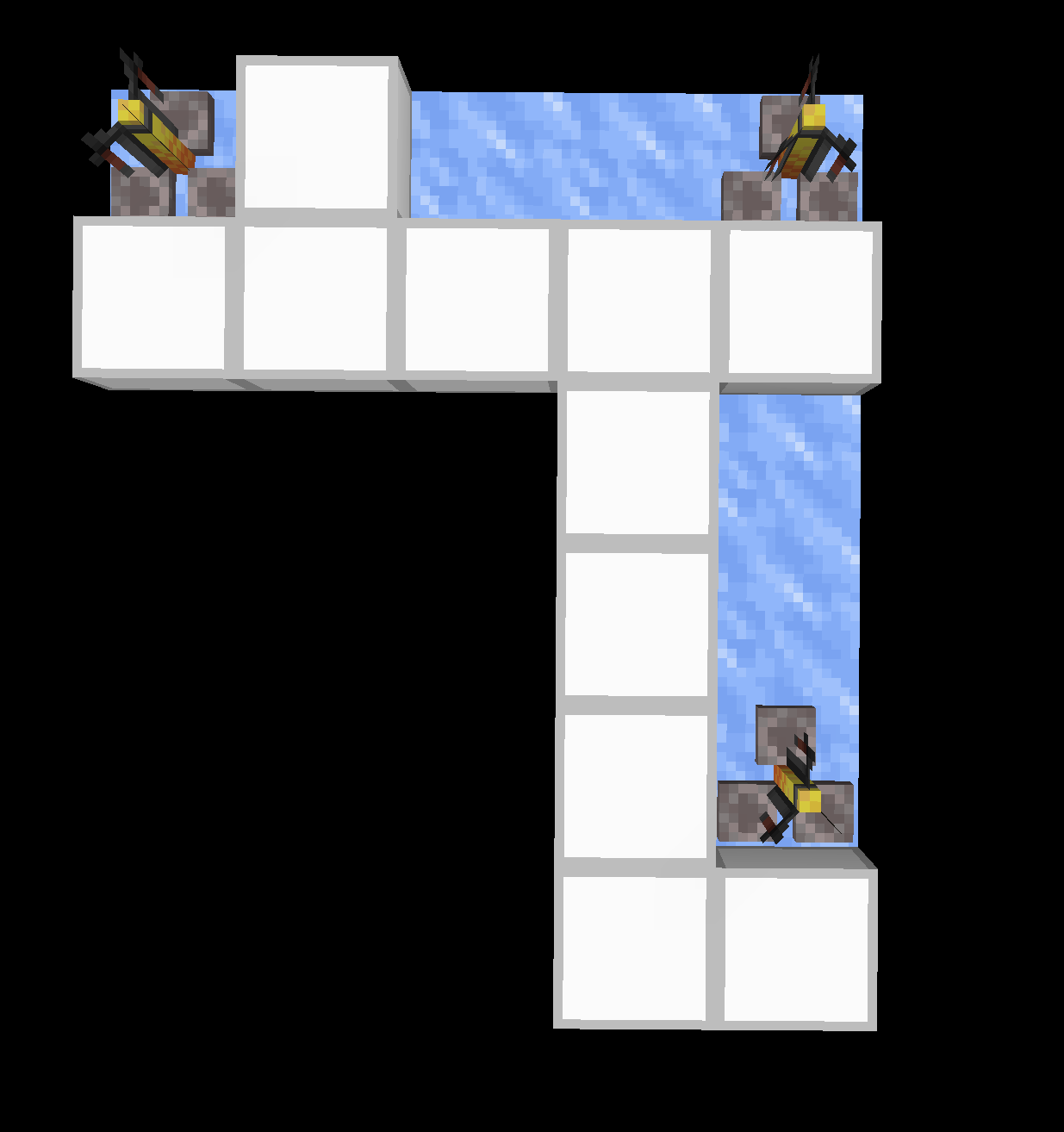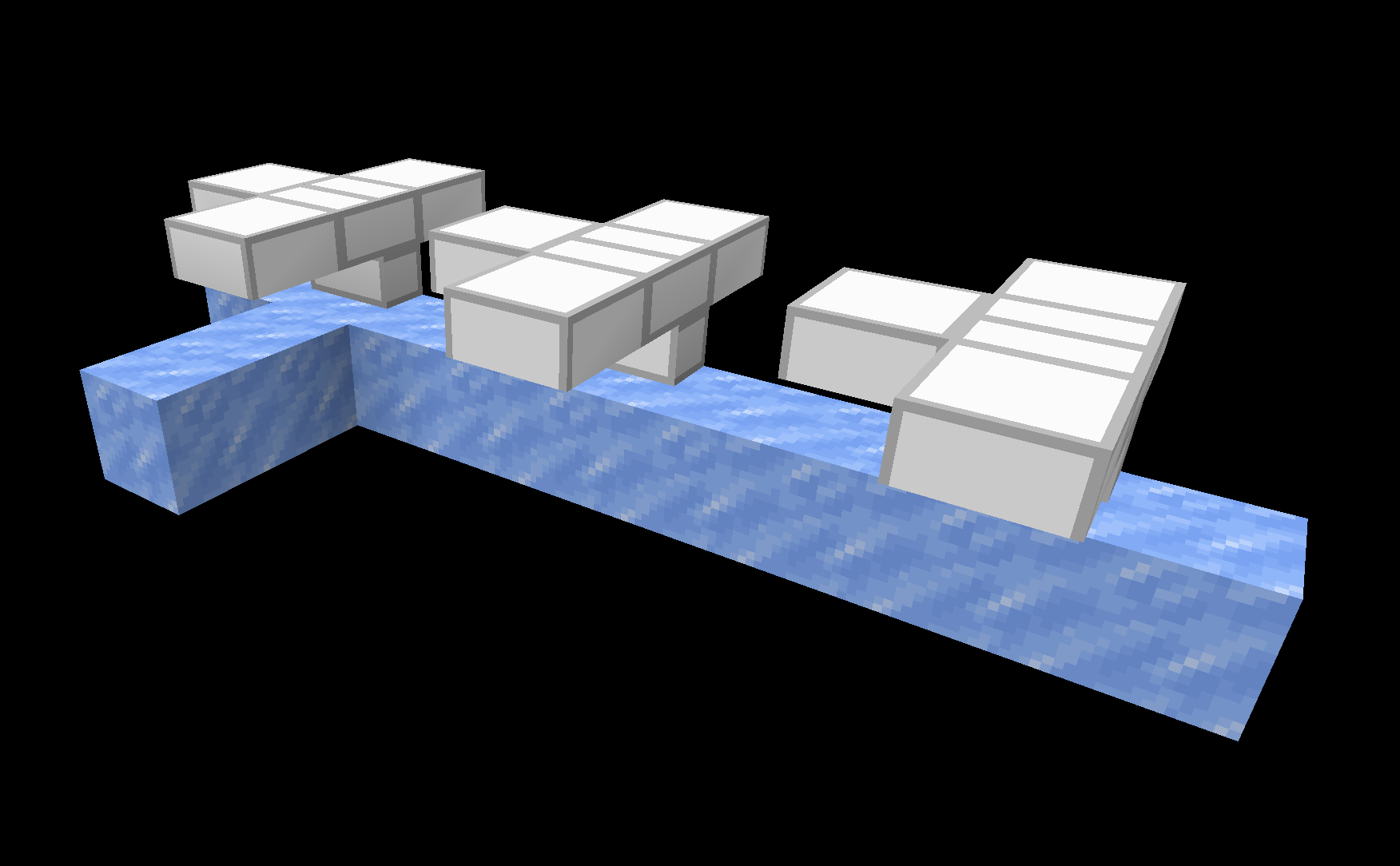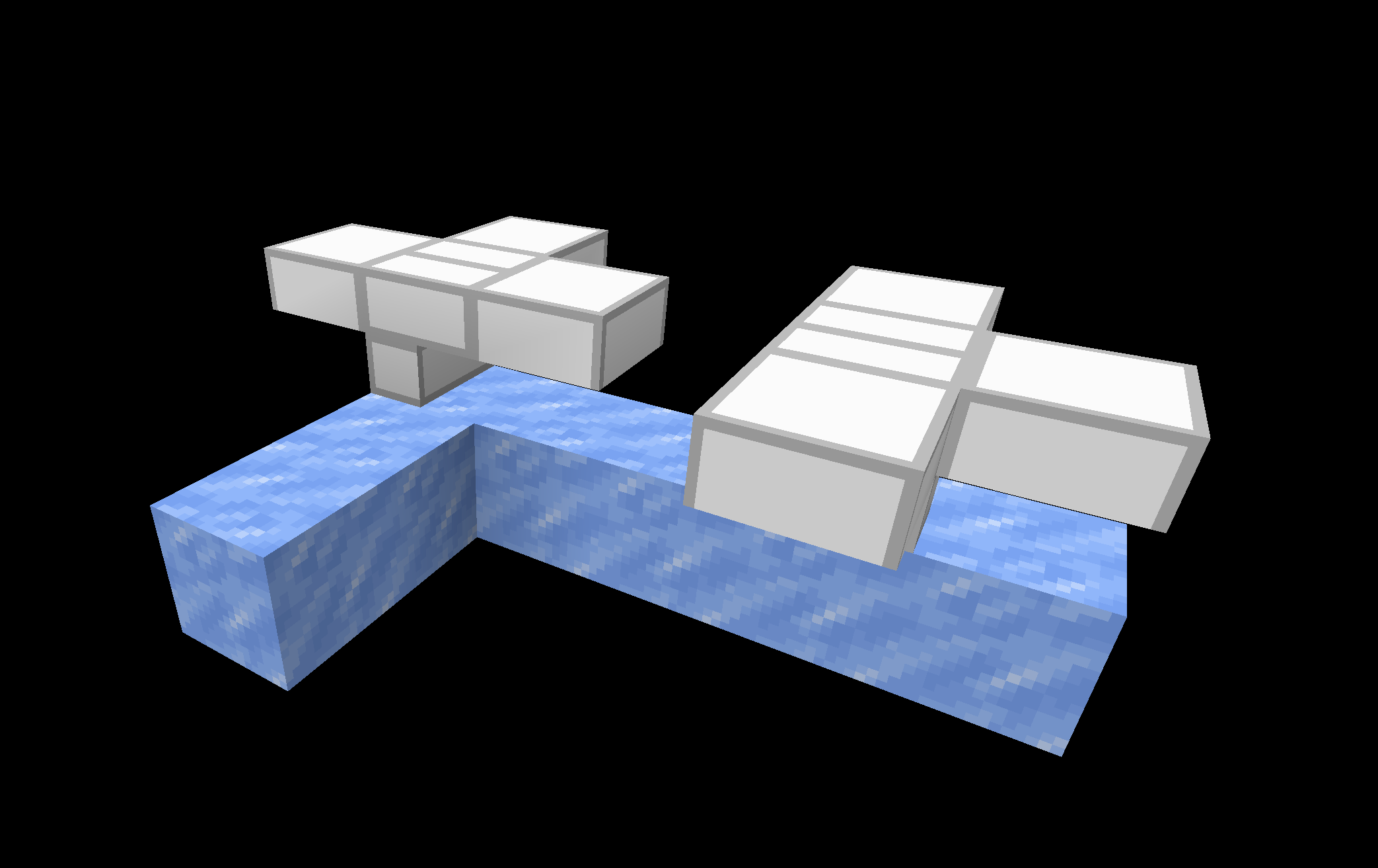Item Streams
In most cases, a simple line of hoppers is both the slowest and most expensive option for item distribution, so how do you optimize moving items for speed and cost?
Ice & Water Streams
The most common method of distributing items across a set of filters is the ice/water stream. A ice/water stream is comprised of 3 parts: The alignment, the ice, and the hoppers. (note that the hoppers on the stream don't have to be filters, its just easiest to imagine them as such, as they most commonly will be filters, as in a chest hall)
 A common setup for a water & ice stream. The items are sitting above both the ice and hopper.
A common setup for a water & ice stream. The items are sitting above both the ice and hopper.
The hoppers are placed just as they would be if a line of hoppers were being used for distributing items: All in a row.
The ice is used to allow items to slide through the spaces between flowing water. It is placed directly next to the filter hoppers, with a non-full block placed on top of them, such that items could be aligned on top of both the hoppers and ice. The most common blocks for this are scaffolding, top slabs, or glass panes. Blue ice has a negligible effect on the speed of a water stream.
The alignment is the most difficult part of a water stream, although it is still easy to set up. There are a few options for alignment depending on the direction the items are being input from. The images below show the most common situations. Note that although chests, ender chests, anvils, and grindstones are popular options for alignment, anvils/grindstones only work when the ice stream is facing a certain direction, and chests/ender chests are tile entities, making them more laggy than honey blocks.
 The honey blocks are slightly smaller than a full block, so they align the items where they need to be. The hoppers are below the scaffolding.
The honey blocks are slightly smaller than a full block, so they align the items where they need to be. The hoppers are below the scaffolding.
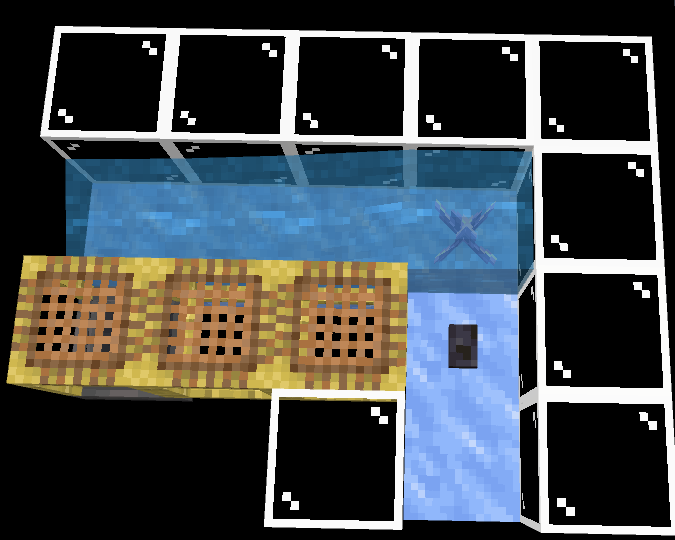 Another method for aligning items. The amethyst bud is medium size.
Another method for aligning items. The amethyst bud is medium size.
 A third, less common method of aligning items. The stairs bounce the items into the honey. Note that there needs to be glass below the stairs.
A third, less common method of aligning items. The stairs bounce the items into the honey. Note that there needs to be glass below the stairs.
Iceless Water Streams
There are some situations in which you cannot use ice in a water stream, but still need to extend it beyond 9 blocks (the limit for a single source pushing items across hoppers). In this case, you need to jump the gap between sections of water by giving the items enough momentum and height to make it across. The only situation in which this is possible is by using sections of water that are 3 blocks long.
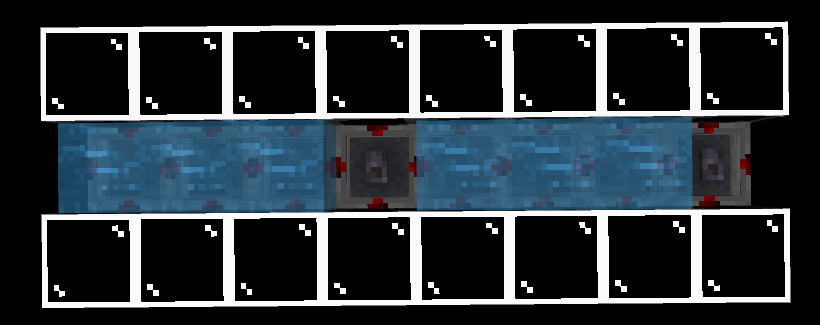 Note that the items need to be aligned over the raised edge of the hopper.
Note that the items need to be aligned over the raised edge of the hopper.
Tips For Special Water Streams
 End rods allow water to flow through them, and also allow repeaters to be placed on top of them.
End rods allow water to flow through them, and also allow repeaters to be placed on top of them.
 Comparators and repeaters allow water to flow through them.
Comparators and repeaters allow water to flow through them.
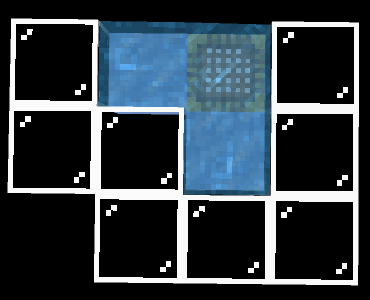 Scaffolding stops water sources from generating. This can be used to create flowing water where it wouldn't be possible otherwise.
Scaffolding stops water sources from generating. This can be used to create flowing water where it wouldn't be possible otherwise.
 Using a setup like this, water flow can be redirected without taking any extra space.
Using a setup like this, water flow can be redirected without taking any extra space.
Waterless Item Streams
Sometimes (often in the nether) you may need to move items without the use of water. For this, you may use some special block properties. Brewing Stands and Stairs give impulses to items that enter the block they are placed in. The direction of this impulse can be controlled by covering certain sides of the stair or brewing stand. Specific alignments and ice allow you to move items along a line, similar to moving them with water. Below is an example of a brewing stand item stream. To enter the stream, throw/dispense items into the face of the honey facing the brewing stand and let them fall onto the stand. This will send them moving to the right towards the next brewing stand, which repeats the impulse.
Turns become signifigantly more complicated with brewing stand streams. Making turns crossing the full length of the turning brewing stand is not feesable, so brewing stand streams are best used to consolidate many points into one. Below is an example of a turn, where item flow starts from the bottom and turns left to end a the top left.
Stair based waterless item streams are cheaper, more lag efficient and much more flexible with input and turns, but are far slower and more difficult to build than brewing stand streams. Below is an example of a stair item stream, where items are input from the left and exit the right side.
Below is an example of a turn with stair streams. Note the slab is missing on the side where you want the items to move towards.

